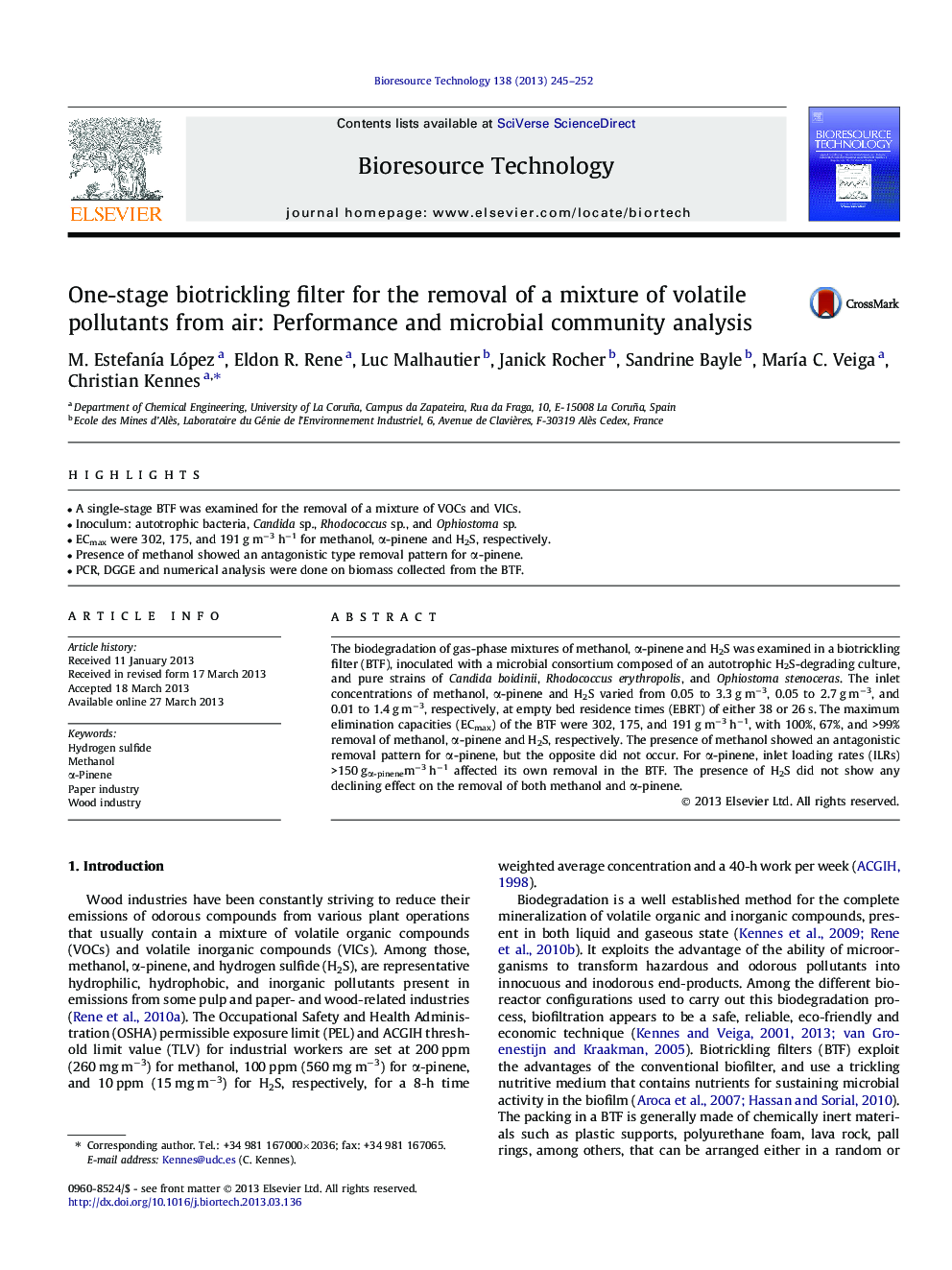| Article ID | Journal | Published Year | Pages | File Type |
|---|---|---|---|---|
| 7082405 | Bioresource Technology | 2013 | 8 Pages |
Abstract
The biodegradation of gas-phase mixtures of methanol, α-pinene and H2S was examined in a biotrickling filter (BTF), inoculated with a microbial consortium composed of an autotrophic H2S-degrading culture, and pure strains of Candida boidinii, Rhodococcus erythropolis, and Ophiostoma stenoceras. The inlet concentrations of methanol, α-pinene and H2S varied from 0.05 to 3.3 g mâ3, 0.05 to 2.7 g mâ3, and 0.01 to 1.4 g mâ3, respectively, at empty bed residence times (EBRT) of either 38 or 26 s. The maximum elimination capacities (ECmax) of the BTF were 302, 175, and 191 g mâ3 hâ1, with 100%, 67%, and >99% removal of methanol, α-pinene and H2S, respectively. The presence of methanol showed an antagonistic removal pattern for α-pinene, but the opposite did not occur. For α-pinene, inlet loading rates (ILRs) >150 gα-pinenemâ3 hâ1 affected its own removal in the BTF. The presence of H2S did not show any declining effect on the removal of both methanol and α-pinene.
Related Topics
Physical Sciences and Engineering
Chemical Engineering
Process Chemistry and Technology
Authors
M. EstefanÃa López, Eldon R. Rene, Luc Malhautier, Janick Rocher, Sandrine Bayle, MarÃa C. Veiga, Christian Kennes,
